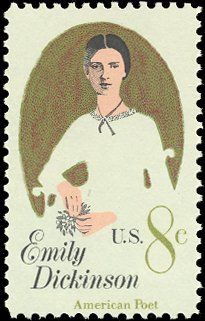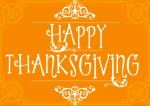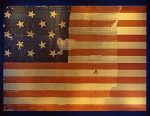(This is one of our first homeschool poems-of-the-week for the new 2024–2025 homeschool year. Print your own River Houses Poetry Calendar and follow along with us as we visit fifty of our favorite literary friends over the course of the coming year.)
![[Autumn Leaves]](https://riverhouses.org/wp-content/uploads/2023/09/emoji-maple-leaf-150x150.png) What defines the seasons? Is it a change in the temperature? Is it migrating birds? Or the position of the sun in the sky? Is it something we sense in the air?
What defines the seasons? Is it a change in the temperature? Is it migrating birds? Or the position of the sun in the sky? Is it something we sense in the air?
Here’s a wonderful poem for homeschool high-schoolers (and for mom and dad, too) that considers how the seasons arrive and what defines them. It’s from British poet Elizabeth Jennings (1926–2001), and it’s our poem-of-the-week for the second week of September — a perfect poem for the start of a new homeschool year.
Song at the Beginning of Autumn
Now watch this autumn that arrives
In smells. All looks like summer still;
Colours are quite unchanged, the air
On green and white serenely thrives.
Heavy the trees with growth and full
The fields. Flowers flourish everywhere.Proust who collected time within
A child’s cake would understand
The ambiguity of this —
Summer still raging while a thin
Column of smoke stirs from the land
Proving that autumn gropes for us.But every season is a kind
Of rich nostalgia. We give names —
Autumn and summer, winter, spring —
As though to unfasten from the mind
Our moods and give them outward forms.
We want the certain, solid thing.But I am carried back against
My will into a childhood where
Autumn is bonfires, marbles, smoke;
I lean against my window fenced
From evocations in the air.
When I said autumn, autumn broke.
When you introduce your students to a new poem, especially one like this that is in a traditional form, take your time, and don’t worry about “getting” everything right away. A good poem is a friend for life, and as with any friend, it takes several meetings to get acquainted.
![[Elizabeth Jennings]](https://riverhouses.org/wp-content/uploads/2018/09/elizabeth-jennings-219x300.jpg)
“Song at the Beginning of Autumn” is a very precisely structured poem. If you count, you’ll find that every line has exactly eight syllables. (That pattern tells you that “flowers” should be pronounced here as something close to a one-syllable word: “flowrs” not “flow-ers.”) Do the lines have a rhyming pattern? They do. The lines of the first stanza end with arrives–still–air and thrives–full–where. (Hear the rhymes?) We’ll call that pattern ABC ABC. If you check all the other stanzas you’ll find that while each stanza uses different sounds, they all have that very same internal rhyming pattern: ABC ABC.
If you read this poem aloud (always recommended for every poem) you’ll discover that it has a kind of prose-y feel — it doesn’t seem very “poetical” at first. What creates that sensation? The prose-y feel comes from Jennings’ deliberate use of a technique called enjambment — a wonderful ten-dollar literary word for your students to learn that refers to the mismatch between the poem’s line-breaks and the natural grammatical pauses in underlying sentences.
The opposite of enjambed verse is end-stopped verse, in which the line-breaks correspond to natural grammatical pauses: “Whose woods these are I think I know (pause). / His house is in the village though (pause); / He will not see me stopping here / To watch his woods fill up with snow (pause).” That’s Robert Frost’s “Stopping by Woods,” a heavily end-stopped poem with a sing-song-y feel.
Contrast that with Jennings, with the natural grammatical pauses added: “Now watch this autumn that arrives / In smells (pause). All looks like summer still (pause); / Colours are quite unchanged (pause), the air / On green and white serenely thrives (pause). / Heavy the trees with growth (pause) and full / The fields (pause). Flowers flourish everywhere (pause).” In her case, many of the natural grammatical pauses don’t coincide with the line-breaks — that’s enjambment, and that’s what creates the prose-y feel of the poem.
You can ask your students some good vocabulary-related questions this week as you try to work through the poem’s meaning together. Who is Proust? What’s the difference between colours and colors? What’s the origin of the word nostalgia? (And how is it related to the word analgesic?) How is the word broke being used here? (I’d say it’s verb definition #5 in the Oxford American Dictionary. See if your students agree.)
What other wonderful words and poetical productions will you and your students be studying in your homeschool this Cygnus Term? 😊
❡ This is a printable lesson: Down at the bottom of this post you’ll find a custom “Print” button that will let you create a neat and easy-to-read copy of this little lesson, and it will even let you resize or delete elements that you may not want or need (such as images or footnotes). Give it a try today! 🖨
❡ When I said autumn, autumn broke: If a special line or turn of phrase happens to strike you in one of our weekly poems, just copy it onto your homeschool bulletin board for a few days and invite your students to speak it aloud — that’s all it takes to begin a new poetical friendship and learn a few lovely words that will stay with you for life. 🍁
❡ Literary lives: If you want to learn more about Elizabeth Jennings, “one of the most popular, prolific, and widely anthologized lyric poets of the late twentieth century,” see if your local library can borrow this recent biography for you: Elizabeth Jennings: The Inward War (Oxford University Press, 2018). ✒️
❡ Here, said the year: This post is one of our regular homeschool poems-of-the-week. Print your own River Houses Poetry Calendar to follow along with us as we visit fifty of our favorite friends over the course of the year, and add your name to our River Houses mailing list to get posts like these delivered right to your mailbox every week. 📫
❡ Homeschool calendars: We have a whole collection of free, printable, educational homeschool calendars and planners available on our main River Houses calendar page. They will help you create a light and easy structure for your homeschool year. Give them a try today! 🗓
❡ Support our work: If you enjoy our educational materials, please support us by starting your regular Amazon shopping from our very own homeschool teaching supplies page. When you click through from our page, any purchase you make earns us a small commission at no extra cost to you. Thank you for helping us to keep going and growing! 🛒
❡ Join us! The aim of the River Houses project is to create a network of friendly local homeschool support groups — local chapters that we call “Houses.” Our first at-large chapter, Headwaters House, is now forming and is open to homeschoolers everywhere. Find out how to become one of our founding members on the Headwaters House membership page. 🏡




